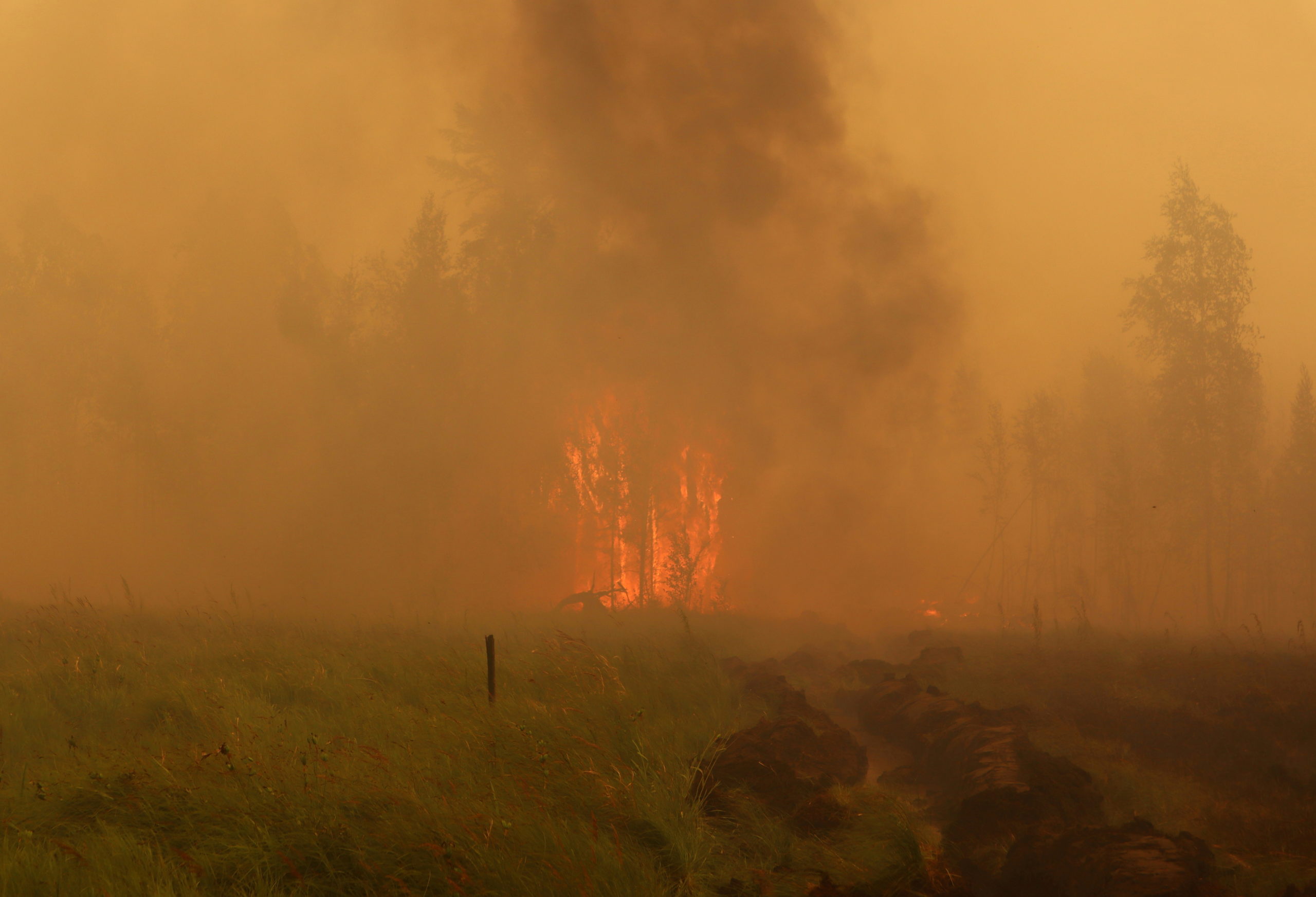Vast wildfires in Russia’s Yakutia have already set an emissions record
Smoke from the fires reached the North Pole, some 3,000 kilometers away.

MOSCOW — Summer wildfires have already produced a record amount of carbon emissions in Russia’s Siberian region of Yakutia, with still more weeks of the fire season to come, according to the European Union’s Copernicus satellite monitoring unit.
Environmentalists fear the fires, fuelled by hot weather, may thaw Siberian permafrost and peatlands, releasing even more carbon that was long stored in the frozen tundra.
So far, this year’s fires have torn through more than 4.2 million hectares in Yakutia, sending enormous plumes of smoke as far as the North Pole thousands of kilometers away this week.
[Siberia sees record heat — again]
The climate-warming emissions since June total more than 505 megatonnes of carbon dioxide equivalent, according to estimates by the EU’s Copernicus Atmosphere Monitoring Service.
That is already well above last year’s record total of 450 megatonnes for the entire fire season, said Mark Parrington, a senior scientist at CAM.
Yakutia in northeastern Siberia is Russia’s largest region, known for its tundra and bitter winters. It would be the world’s eighth largest country if it were independent.
‘Continental scale’
While wildfire is part of the natural forest cycle for Russia’s northern boreal forests, scientists have been stunned by the scale and intensity of blazes in recent years.
That has coincided with extreme warming in the Arctic, where average temperatures are rising more than three times as fast as the rest of the world.
[Finland’s worst wildfire in decades is raging through a northwest forest]
Towns in Yakutia have sometimes been blanketed by acrid smoke so thick it blocks out the sun. Last month, Moscow sent military troops and planes to help the firefighting effort.
This week, smoke traveled more than 3,000 kilometers from Yakutia to the North Pole.
“What makes this particularly peculiar is that the air masses with smoke are reaching that far north. I don’t think anyone has recorded that before,” said Santiago Gassó, an atmospheric scientist at the University of Maryland.
“This is continental scale by definition.”


